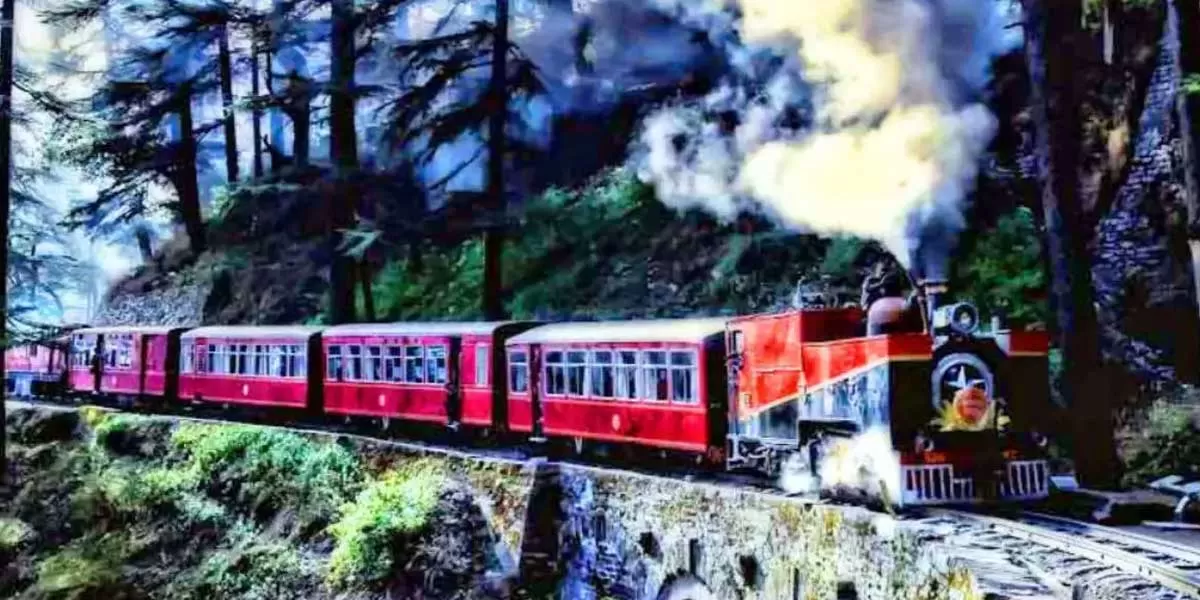Many colonial-era railway stations in India are transforming into city centres under the Amrit Bharat Station Scheme. Approximately 1,318 railway stations across India, including those in Delhi and the National Capital Region (NCR), such as New Delhi, Delhi Cantonment, Anand Vihar, Gurugram, Ghaziabad, and Faridabad, are earmarked for development or redevelopment.
A senior railway official said PM Modi laid the foundation for 554 stations last month and virtually inaugurated the first phase of the redeveloped Gomti Nagar station in Lucknow. He also mentioned that apart from Gomti Nagar, stations like Gandhinagar Capital, which now features a luxurious five-star hotel atop it and Rani Kamalapati railway station in Bhopal had already been redeveloped.
The senior railways official mentioned that the redevelopment was underway at 65 major stations across the country and was at different stages of progress. He stated that many stations, including Chandigarh, were already over 50% complete. Furthermore, it was highlighted that most stations were being redeveloped under an engineering, procurement, and construction (EPC) model. The official emphasised that stations had been upgraded over the years under various schemes. Yet, they were being fully redeveloped to provide a world-class experience to travellers and create new city centres at railway stations, integrated with the surrounding urban environments through place-making.
The Amrit Bharat Station Scheme focuses on renovating railway stations by constructing modern buildings with separate arrival and departure areas. These buildings integrate various facilities such as airport-like concourses, digital information systems, lounges, shopping zones, and business spaces. Stations like New Delhi will function as multi-modal transit hubs, offering luxury amenities. Dikshu Kukreja, from CP Kukreja Architects, emphasised the goal of transforming stations into vibrant urban centres by integrating transportation with commercial and recreational facilities.
The Gandhinagar Capital Station, India's first redeveloped station, features a modern facade, an interfaith prayer hall, waiting lounges, a business centre, and an airport-like concourse. In its completed first phase, Gomti Nagar station in Lucknow includes separate terminals, a connecting concourse, and various amenities.
Kukreja highlighted the importance of emulating global mega stations like Grand Central in New York for efficient traffic management. He suggested introducing separate departure and arrival points at Gomti Nagar. Plans for stations in Delhi-NCR, such as Gurgaon, aim for grandeur and modernisation. On the other hand, according to Harsh Varshneya, principal architect at Sthapati Associates, Andheri station in Mumbai plans to become a bustling city centre for dining and shopping.
The evolving role of railway stations has shifted towards passenger-focused design, with goods movement now shifting to new freight corridors and stations, according to Goonmeet Singh Chauhan, co-founder of Design Forum International (DFI). Railway stations in India were historically located on the outskirts of cities but have since been surrounded by densely populated urban areas. Chauhan noted the uneven development of cities due to the location of station buildings on one side, leading to a lack of proper foot-over bridges and limited cross-city movement.
Redeveloping stations without disrupting railway operations presents significant challenges, including maintaining critical infrastructure while introducing modern amenities. Varshneya explained the phased approach to construction and engagement with multiple stakeholders to align station master plans with broader city master plans. Heritage stations like Bangalore Cantonment pose architectural challenges, requiring preserving historical features alongside modern functionality.
During the foundation stone laying ceremony, the Prime Minister highlighted the importance of these stations, which symbolise progress and heritage and showcase local culture and architectural heritage. Chauhan emphasised prioritising local architecture and materials in station construction, reflecting the city's cultural identity. Railway station designs are seen as exercises in place-making, prioritising safety, inclusivity, and convenience while capturing the essence of the city's cuisine, culture, and architectural heritage.


















